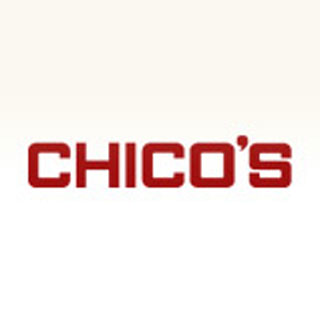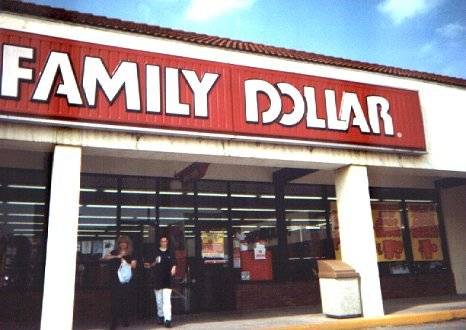

As posted by: Wall Street Journal
Now that Yahoo Inc. has named a new chief executive, Microsoft Corp.'s Chief Executive Steve Ballmer may finally be in a position to gain ground on Internet juggernaut Google Inc.
Mr. Ballmer is expected in the coming months to renew his yearlong pursuit of a multibillion-dollar deal for Yahoo's Web-search unit. But behind his push to capture a bigger piece of Google's lucrative business lies an untold story: Nearly a decade ago, early in Mr. Ballmer's tenure as CEO, Microsoft had its own inner Google and killed it.
In 2000, before Google married Web search with advertising, Microsoft had a rudimentary system that did the same, called Keywords, running on the Web. Advertisers began signing up. But Microsoft executives, in part fearing the company would cannibalize other revenue streams, shut it down after two months.
Microsoft got a second chance in early 2003 when top executives proposed that the company buy Overture Services Inc., a pioneer in combining search results with ads. Mr. Ballmer and Microsoft co-founder Bill Gates shot down the deal. Instead, Overture was snapped up by Yahoo -- and now forms a cornerstone of the Yahoo unit Mr. Ballmer covets.
Last year, Mr. Ballmer offered to buy Yahoo for $50 billion. When that bid failed, he made an offer to buy Yahoo's Web-search operations, saying in the past month that both companies would benefit by doing a deal "sooner than later." Tuesday brought fresh opportunity, when Yahoo named Carol Bartz, an industry veteran, as its new chief executive. Many industry observers think Ms. Bartz could become Mr. Ballmer's new counterparty in negotiations.
The story of Microsoft's early missteps helps explain how Google became the uncontested leader in making money from Internet searches, and why Microsoft is trying so hard to make up for lost time. It also exposes a broader challenge facing Mr. Ballmer as he guides his company of nearly 100,000 employees: how to foster groundbreaking technologies and businesses that are under his nose. With investments into nearly every major area of software, Microsoft has plenty of innovative ideas and technologies. Its challenge is deciding which ones to nurture.
Search ads, called paid search in industry lingo, are the prime engine of Google's profits. Each time a person searches Google, the site spits out the results, plus paid advertiser links. Whenever someone clicks on one of the paid links, Google collects a fee from the advertiser.
The paid-search business will account for most of the $5 billion in profit analysts expect Google to post when it reports its 2008 earnings next week. Researcher eMarketer Inc. forecasts the U.S. paid-search market will reach $12.3 billion in 2009, about three times the level in 2004. Google has captured 73.5% of the market, compared with 13.3% for Yahoo, eMarketer says. Microsoft is a distant third.
Mr. Ballmer is facing many challenges over the next year. A worsening economy is forcing him to consider cutting workers to an unprecedented degree in coming days. There's no guarantee that a deal for Yahoo's Web-search business would propel the company to the forefront of a rapidly changing industry, where competitors include "vertical search" engines for specialty areas such as health care. Many industry experts say Google's present service may ultimately be seen as a primitive precursor to more-advanced services that better handle video or render results in three-dimensions. Microsoft, Yahoo and Google are all investing in such areas.
But as Mr. Ballmer manages Microsoft without Mr. Gates, who left full-time work there last year, he said the Keywords episode and similar missteps are at the front of his mind. "The biggest mistakes I claim I've been involved with is where I was impatient -- because we didn't have a business yet in something, we should have stayed patient," Mr. Ballmer said in an interview. "If we'd kept consistent with some of the ideas" that Microsoft had in-house in 1999, "we might have been in paid search."
The roots of Microsoft's first paid-search foray trace back to 1995. The World Wide Web was just becoming popular. Small companies like Yahoo allowed users to punch in search terms to find content across the expanding Internet. That year, a University of Illinois student named Scott Banister hit upon adding ads to these search results. He quit college in 1996 and drove his Geo hatchback to California to start a company around his idea, which he called Keywords.
Mr. Banister left Microsoft soon after it bought his employer in 1998. He eventually co-founded IronPort Systems, an antispam company he sold to Cisco Systems Inc. in 2007 for $830 million. He then became an investor and helped his wife start Zivity, a subscription-only Web site that lets photographers post "tasteful" pictures of women with little or no clothing. Now 33 years old, Mr. Banister never made Google-like money from paid search. "I've kind of had to make my peace with it," he says.
After leaving Microsoft in 2000, the LinkExchange founder started a rock band, the Shusterbabies, and worked on a screenplay about guys in their mid-20s trying to meet women. In 2002, he bought online music site Garageband.com, and later, with the help of his twin brother, rechristened the company iLike, which became a hit service on Facebook. Now 36 years old, Mr. Partovi says he remains a Steve Ballmer fan. After running his current company, "I completely sympathize with the difficulty" of running Microsoft, he says.
Mr. Bliss left Microsoft in late 2003 after 16 years working on Outlook email software and running the search business. He took an executive role at the travel Web site Expedia, became a donor to cancer research and in 2007 joined Gomez Inc., a company that makes software for measuring Web site performance. Now 44 years old, he recounts fondly the days as one of few Microsofties to push search. "We had made pretty good strides," he said. "Until Google came along."
In 1998, Mr. Banister joined Ali Partovi, a 26-year-old San Francisco entrepreneur who ran an online-ad company called LinkExchange. That November, Microsoft bought LinkExchange for $265 million.
Microsoft wanted LinkExchange for its core business of distributing online ads to Web sites. But Mr. Partovi spent 1999 making monthly trips to company headquarters near Seattle to persuade his new bosses at Microsoft's online group to develop Mr. Banister's idea. Mr. Partovi proposed programming a system to auction off keywords -- bed and breakfast, for example, or llama farms -- to advertisers. When users of the company's online service, Microsoft Network, or MSN, searched these terms, advertiser links would appear alongside the search results.
"This is the next big thing," Mr. Partovi said, according to Bill Bliss, then the leader of the online group's Web-search team.
But his bosses were eyeing different prizes. Microsoft was chasing America Online Inc., believing that the Web's big profits would come from selling subscriptions to sites that offered news, entertainment or travel information. Ad revenues would come primarily from the high-priced display banners that big advertisers were buying on MSN. Microsoft and most Internet companies saw search engines as an unimportant sideline.
Microsoft managers also had philosophical objections to Mr. Partovi's plan. At the time, Microsoft culled search results from outside search-engine companies, and then had some 15 in-house editors check the links for accuracy and relevance before clearing them to appear on MSN. Mr. Bliss, the search-group manager, says he wanted Microsoft to expand into the search business but he initially thought mixing edited results with auction-generated ads would lower the quality of Microsoft's search results.
Mr. Partovi was also buffeted by convulsions far above him. Microsoft's top executives had trouble settling on a clear strategy for the fast-growing Internet, which opened a revolving door of managers at MSN, say those familiar with the online group. The two executives who first championed Mr. Partovi's ideas were shifted out of the group. Later, Mr. Partovi's team was moved to the division that made Microsoft's Office software.
Mr. Ballmer didn't oppose the Keywords concept, say people involved with MSN at the time. One day, Mr. Ballmer argued the issue with Mr. Bliss while traveling with other executives across Microsoft's campus in a company van. Mr. Bliss's resistance to the automated search ads was like having "demons," Mr. Ballmer told Mr. Bliss, according to people familiar with the exchange.
"I'm going to exorcise the demons from you!" Mr. Ballmer bellowed repeatedly as he shook his outstretched hands at Mr. Bliss, these people say.
Mr. Bliss started to warm to paid search, he said, as he watched a little company called Goto.com that had successfully combined ads and search. The little start-up had struck a deal that paid Microsoft any time a person used the software giant's Web browser to access Goto.com. On the day the deal went live, an employee in Microsoft's online group taped a piece of paper on her boss's door with the result: "$50,000 in One Day!" it read.
By 1999, advertisers and other partners were flocking to Goto.com. Mr. Bliss, who left Microsoft at the end of 2003, says that by early 2000, the Goto deal was supplying the online group growing amounts of cash.
In early 2000, a new boss in the online group helped Mr. Partovi get clearance to run a live search-ad trial on the MSN site. The "bed and breakfast" search would now generate not only edited results, but also sponsored links to travel sites and tourism associations. Advertisers signed up and a small stream of revenue started flowing.
But some managers, worried the service would eat into display-ad revenue, had placed restrictions on it. Results appeared low on MSN's search page. Auctions for keywords started at a minimum bid of around $15, which Mr. Partovi believed might deter many potential advertisers.
Mr. Partovi and his small team fought unsuccessfully to have the restrictions removed. One day, Mr. Partovi says, he took it upon himself to have a colleague lower the minimum bid price.
The insubordination incensed executives. Mr. Partovi's boss, though a supporter, told him to stop emailing the MSN executives and stay away from Seattle for a while. In May 2000, after Keywords had brought in about $1 million in revenue -- far less than Microsoft's other online ad revenue -- the company shut it down.
"In retrospect, it was a terrible decision" to end the search-ad service, says Satya Nadella, the boss who helped Mr. Partovi get the live trial for Keywords. "But in all honesty," said Mr. Nadella, now a Microsoft senior vice president and a manager of Microsoft's search business, "none of us saw the paid-search model in all its glory."
By then, Mr. Partovi says he was ready to quit. He talked to Mr. Ballmer by telephone about his frustrations with Microsoft's resistance.
Mr. Ballmer sympathized but said he was hamstrung, Mr. Partovi recalls. Mr. Ballmer had become Microsoft's chief executive earlier that year and was trying to delegate. Reviving the search-ad service would mean reversing a decision made by managers at least three levels below him, he told Mr. Partovi. Mr. Ballmer, through a spokesman, declined to comment.
Mr. Partovi started shopping for a new employer that would champion his search-ad concept. He pitched the idea to Yahoo. Yahoo co-founder Jerry Yang responded that the idea "would not fit well given our current set of strategies," according to a June 20, 2000, email from Mr. Yang viewed by The Wall Street Journal. Mr. Yang declined to comment through a Yahoo spokeswoman.
Mr. Partovi also approached Google, then a fast-growing search-engine company unsure of how to turn its popularity into big profits. Google also chose not to work with Mr. Partovi. But behind the scenes, the company was working on its own search-ad business.
Mr. Partovi left Microsoft in July 2000, closing Microsoft's first paid-search episode. Soon, with the cost of entry rising, Microsoft would miss a second time.
In October 2000, Google launched its union of search and ads, called AdWords. By 2002, the upstart search company was stealing advertisers from industry pioneer Goto.com. Google also had one advantage over competitors like Microsoft: It had its own search engine, which allowed it to better control its paid search system. Goto and Mr. Partovi's Keywords relied on partnerships with other search engines. That May, America Online dropped Goto.com as its paid-search partner and teamed up with Google.
Microsoft took notice of Google's growth. By late 2002, a group of Microsoft executives visited the Pasadena offices of Goto.com -- which had by now changed its name to Overture -- for a briefing on the business. Yusuf Mehdi, now a senior vice president at Microsoft, launched an effort to buy Overture.
Around the same time, Overture executives were also shopping the company to Yahoo. Yahoo and Overture nearly reached a deal one Saturday in February 2003 but Yahoo walked away, a move that mystified Overture executives. Overture then approached Microsoft, saying it was open to a takeover offer.
In spring 2003, Mr. Mehdi and a small team assembled in a Microsoft conference room to pitch an Overture purchase to Messrs. Gates and Ballmer. By then, Google was the largest Internet search provider and was quickly eating into Overture's business.
Messrs. Gates and Ballmer tore into Mr. Mehdi and another executive, in part criticizing the rationale for buying a company that appeared to have little in the way of unique software technology, say Mr. Mehdi and other meeting participants. The Microsoft chiefs balked at Overture's valuation of $1 billion to $2 billion, arguing that Microsoft could create the same service for less.
The company's chiefs gave Mr. Mehdi clearance to build ad-search services in-house, the traditional Microsoft approach. Messrs. Gates and Ballmer declined to comment.
That summer, Yahoo bought Overture in a deal that would be valued at $1.8 billion.
Microsoft, meanwhile, spent the next 18 months deploying hundreds of programmers to build a search engine and a search-ad service, which it code-named Moonshot. The company launched its search engine in late 2004 and its search-ad system in May 2006.
Advertisers applauded Moonshot for its technical innovation. But Microsoft had trouble coaxing people to migrate to its search engine from Google; advertisers were unwilling to spend large sums on MSN's search ads. By building a new system instead of buying Overture, Mr. Mehdi says, "we really delayed our time to market."
Yahoo began retooling Overture to better compete with Google, but technical troubles plagued its efforts for years. Still, Yahoo had a strong team of engineers, good advertiser connections and a solid second place to Google in the Internet search market. It was enough for Mr. Ballmer to swoop in last year with his bid to buy the company. That plan faltered in May as the two sides failed to come to terms.
Now, Mr. Ballmer is ready to return to the negotiation table. "Good ideas are usually better done quickly than slowly, so it would probably be better for both us, and certainly for Yahoo, if we were to do it sooner than later," he said in his interview with the Journal. People close to Mr. Ballmer said he was waiting for Yahoo to appoint its new chief executive officer before making an advance.
Whether or not Mr. Ballmer and Ms. Bartz strike a deal, Microsoft has learned a lesson from the Keywords episode. Five years ago, Mr. Ballmer said, the company didn't want "discordant and dissident" directions and thus "ran the risk of some things not happening." Recently, the company started a service that Google doesn't have -- paying people a small fee if they use Microsoft's search engine to find and then buy certain products online.
 As posted by: Wall Street Journal
As posted by: Wall Street Journal
























